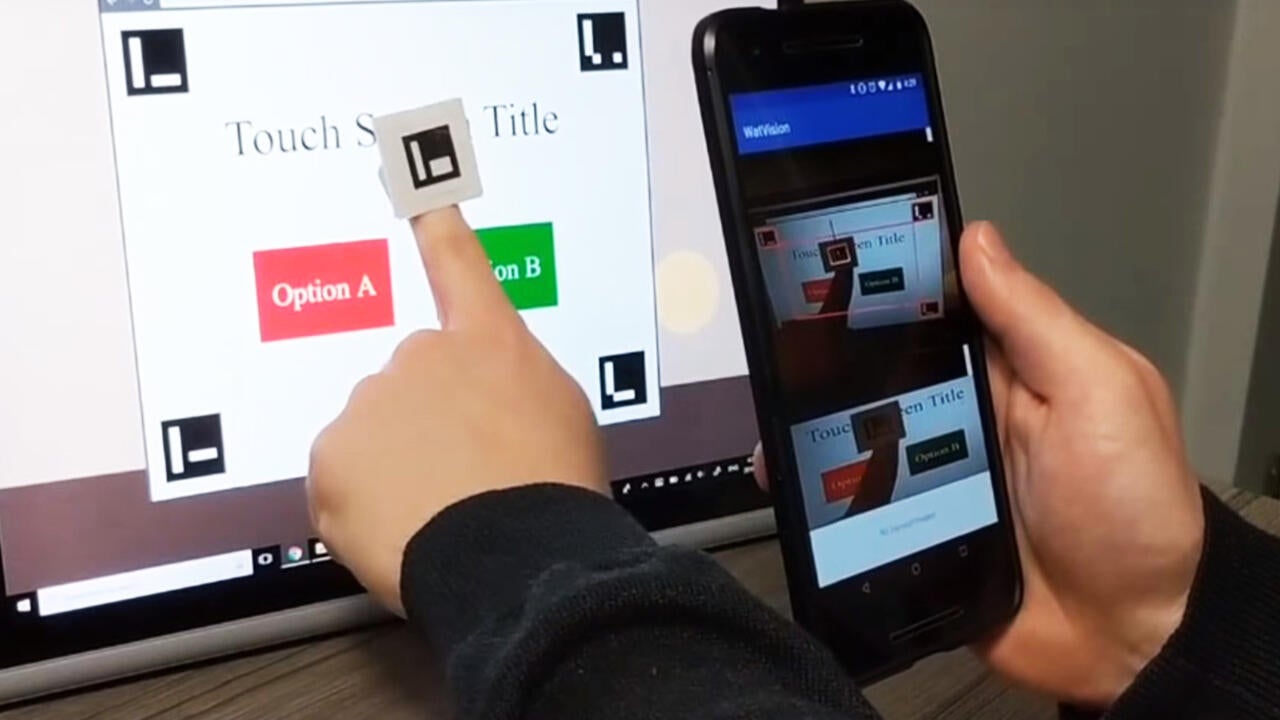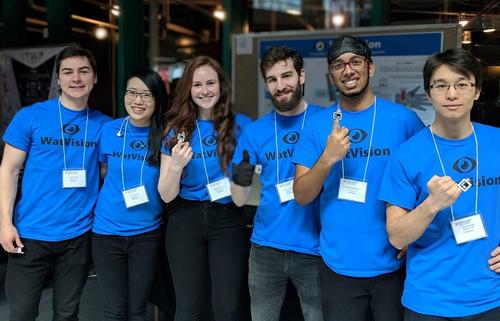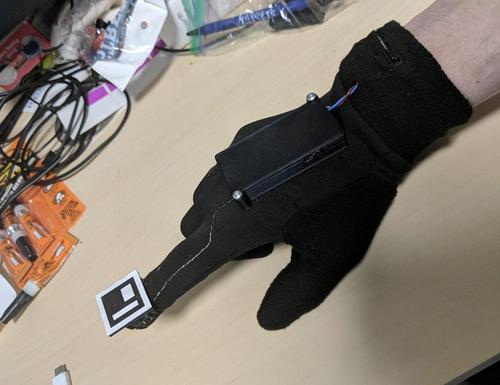
Engineering students’ project captures national Dyson award
WatVision makes touch screens accessible to the visually impaired.

WatVision makes touch screens accessible to the visually impaired.
By Carol Truemner Faculty of EngineeringA blog post, written by a visually impaired person about the challenges she faced trying to use the office’s new touch screen coffee maker, was the inspiration behind a recent Waterloo Engineering Capstone Design project. WatVision took home top honours in the national leg at this year’s James Dyson Award for its clever, yet simple engineering principles.
Developed by six mechatronics engineering students, WatVision is a system that reads out words or numbers on a device allowing visually impaired individuals to make a cup of java, select an elevator floor or perform other functions most people take for granted.

WatVision includes an app as well as a ring that the user wears on a finger. By pointing a smart phone camera at a touch screen, the app reads out whatever word or number is underneath the individual’s finger. One of the main advantages of the ring design is that it costs less than $2 to produce.
For a better user experience, the team also designed a glove that includes a bluetooth sensor and a motor which gives feedback in the form of vibrations at the user's fingertip indicating the distance away from the button.
When it came to selecting a Capstone Design project last year, the mechatronics students decided they wanted to design something that would help with accessibility.
“We looked at creating braille readers at first, but decided that would be way too hard,” says Craig Loewen, a WatVision member. “When [a team member] read a blog post about an individual not being able to make coffee because she couldn’t use the touch screen, we all said that we could solve that problem.”

Team members tested their prototype system on people with different levels of visual impairment.
“In about 30 minutes, the person who was blind was able to go through a few screens on a touch screen. Another individual with low vision was able to use it instantly and really liked it,” says Loewen.
In March, WatVision captured a GM Innovation Award as well as second place in the People’s Choice Award during TronCon, an annual mechatronics engineering event that connects alumni with current students.
Team members Loewen, Jennifer Kim, Joseph Lundy, Lior Lustgarten, Elizabeth Morrow and Jake Rampertab, graduated from Waterloo last spring and have all landed full-time jobs throughout North America.
The team hopes to integrate images and colours into the next version of WatVision and for users to navigate the touch screen without wearing a ring. They will put the $3,000 James Dyson Award prize towards maintaining server access subscriptions and computing time.
The team has made WatVision open source to allow access for others to make improvements and upgrades. A couple of members plan to talk to companies about the possibility of integrating it into their products. Ideally, they’d like to see their system in place at various places including airports, grocery self-checkouts and ATMs.
Loewen, now working for Microsoft in Seattle, feels that Waterloo’s co-op system gave WatVision a competitive edge in the national Dyson award competition.
“Our team members had different co-op experiences. Some people had exclusively software jobs, some people had electrical. I was mainly working as a project manager,” he explains. “Our broad expertise was really valuable when it came to designing our product.”
WatVision and the two national runners up will move onto the next stage of the James Dyson Award where a panel of Dyson engineers will select a shortlist of international projects later this month.

Read more
Here are the people and events behind some of this year’s most compelling Waterloo stories

Engineering master's student Nayeema Nonta (left), one of the three paper authors, and her supervisor, Dr. Sirisha Rambhatla, in a large server room with the computer power needed to develop their new LLM training technique. (University of Waterloo)
Read more
Waterloo researchers develop highly efficient AI training system that paves the way for cheaper, greener “intelligent partners”

Read more
Engineering researchers team up to tackle the plastics pollution problem with microbial innovation and engineering design
Read
Engineering stories
Visit
Waterloo Engineering home
Contact
Waterloo Engineering
The University of Waterloo acknowledges that much of our work takes place on the traditional territory of the Neutral, Anishinaabeg, and Haudenosaunee peoples. Our main campus is situated on the Haldimand Tract, the land granted to the Six Nations that includes six miles on each side of the Grand River. Our active work toward reconciliation takes place across our campuses through research, learning, teaching, and community building, and is co-ordinated within the Office of Indigenous Relations.